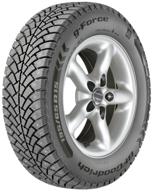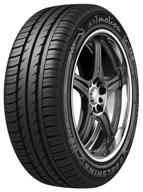
Review on Motherboard GIGABYTE B560M AORUS ELITE (rev. 1.x) by Adam Listopad ᠌

The right product for me, the price suited me.
In total, it remains only to solve the issue of cooling (for the i5-11400, this is a tap of 80-125 watts, not 65 as indicated in the specification), as well as to solve the issue of choosing a motherboard, and take into account that the motherboard will work at an increased load in terms of processor power supply. With coolers, everything is simple. It is more complicated with the motherboard: There is a PCB backside indicator - this is the temperature of the elements supplying power to the processor. The colder they are, the longer the board will last and the more powerful processor it can handle. There are fresh reviews in English where you can see the results with the Core i5-11400 and more powerful processors in compliance with the 65 watt TDP and with No power limits (but keep in mind that not all motherboards allow any power, for example, the Asrock B560M Pro4 widely recommended in reviews , has a limit of 100 watts in the BIOS, plus is not able to pass temperature tests even for i7-11700), and also figure out what will happen after upgrading to Core i7-11700. According to these reviews, the best motherboard is Gigabyte Aorus Pro (for 12500 as of July 2022), since according to tests it always gives the maximum frequency + minimum temperature, and can even withstand i9K (which is naturally redundant in this board). Considering the price and the fact that I had to wait longer, guided more by the photo of the batteries, I took the Aorus Elite for 11500. At that moment, the cheapest Asrock B560M Pro4 cost 9000. Later I saw that on one of the largest 2022 resources on computers (sorry, I can’t provide a link), the same idea was formulated: for the LGA11200 + modern junior i5 socket: just take a good motherboard and get a constantly on turbo boost, that is, the i5-11400 constantly works on 4.4, showing miracles of performance per. If the power consumption limits are not forcibly turned off, then after some time under load, the frequencies will be automatically reset. Well, as I wrote above, some motherboards simply cannot run the CPU at its maximum turbo boost frequency (Asrock B560M Pro4 keeps i5-11400 at 3.99)
- Beautiful logo at launch. Everything started without problems, there are no limits, the frequency is almost 4400. I have not tried to overclock the memory and load it yet, I will add it later. For the 11th generation of Rocket Lake, you need to carefully choose motherboards according to two criteria - the ability to keep the processor at maximum frequencies, the ability to power it, and the ability to successfully remove the resulting heat (TDP). For example, there is an i5-11600K, it has a base 3.90, a maximum of 4.9. Unlock and gives him 3.9 base. And there is an i5-11400, it has a base 2.60 GHz, a maximum of 4.40. The base differs greatly, and the maximum differs slightly. The main difference between the two is that the i5-11400 is choked with a TDP of 65 watts. Not by blocking the multiplier, but by the thermal package. Previously, Intel blocked the multiplier in the processor itself and there was nothing to be done. But over time, a turbo boost appeared, which, under load, increases the frequency. Because of the turbo boost, Intel can no longer just lock the multiplier, because then they will immediately lose the competition. And they did it through a thermal pack. But here, because of competition, I had to make a 560 chipset that allows you to drive memory, and at the same time, or through an oversight, they allowed to remove restrictions on the thermal package, but they didn’t take into account that it was within the limits of the thermal package that the pricing policy for processors was determined in terms of more expensive/cheaper. As a result, it turned out that with a huge difference in price, the same difference in performance will be only if this thermal package is observed. If you do not comply with it, then due to the technology of temporarily increasing the frequency under load (turbo boost, which is controlled only by the thermal package, which, as it turned out now, can be changed and not observed), you can increase the frequency by a constant and get a constant level performance on the younger model older model. Continuation to comment.
- Naturally, all gigabyte software is crooked and outdated: 1. RGB fusion (for backlight control) has a terrible interface from 2022. It also works badly, for example, mode one was called "backlighting by music", although in reality, as the color shimmered, it continues in essence. "Highlight on games" contains only two games, CSGO and some other little-known. For example, a jamb - in the program you can put that after the computer falls asleep, the backlight continues to shine. However, if you set the backlight mode to DigitalD, then when you fall asleep, the backlight will turn off. Like trifles, but enrage. I don’t know about others, maybe all manufacturers are like that. But I have high requirements for software. 2. After installing all the progs from the manufacturer, the window with the game began to lose focus, now I deleted everything (the problem has disappeared) and put it one by one until the problem appears again. But also a bug.
New products
Comments (0)
Top products in 🚗 Mud Flaps & Splash Guards
Another interesting products
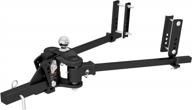
Get Ultimate Towing Stability With CURT TruTrack Weight Distribution Hitch & Sway Control - Up To 10K Capacity, 2-Inch Shank & 2-5/16-Inch Ball - In Sleek Black Design

30 Review
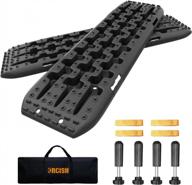
4WD ORCISH Recovery Traction Boards Tracks Tire Ladder For Sand Snow Mud - Set Of 2 (2Nd Gen Bag + Mounting Pins, Black)

39 Review
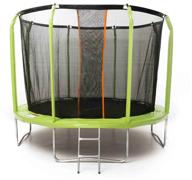
SuperJump Trampoline with SuperJump 8ft (244 cm) net and ladder

29 Review

ORCISH 12V 13000-lb Load Capacity Electric Truck Winch Kit 🚚 with Synthetic Rope - Waterproof Off Road Winch for Jeep, Truck, SUV

35 Review


